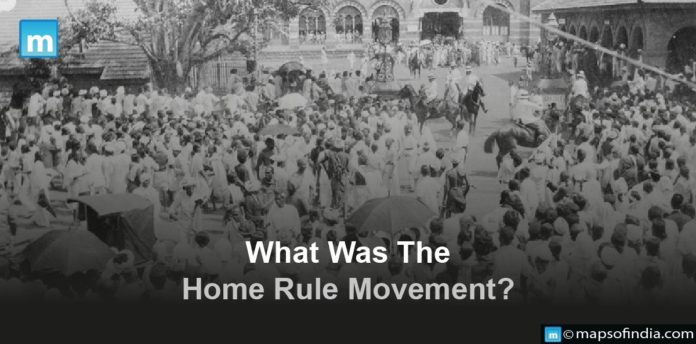The Home Rule Movement in India was a political campaign to achieve self-rule or home rule for India. The movement was initiated by Annie Besant, an Irish-English social activist and Theosophist, and subsequently supported by Bal Gangadhar Tilak, an Indian nationalist and freedom fighter. The Home Rule Movement played an essential role in the Indian independence movement and paved the way for the Swadeshi and Non-cooperation movements.
Background
India was under British colonial rule during the late 19th and early 20th centuries, with the Indian National Congress being the leading political organization demanding freedom from British rule. However, the British government was unwilling to grant self-rule to India, and the Indian National Congress faced several challenges in its fight for independence.
Annie Besant’s Role
In 1915, Annie Besant launched the Home Rule Movement in India, which aimed to achieve self-rule for India through peaceful and constitutional means. Besant believed that the British government should grant self-rule to India and that India had the right to govern itself. Besant’s campaign for home rule was focused on educating the Indian masses about their rights and encouraging them to demand self-rule from the British government. Besant also started several newspapers, including the New India and the Commonweal, to promote her message.
Tilak’s Support
Bal Gangadhar Tilak, an Indian nationalist and freedom fighter, initially opposed the Home Rule Movement. However, he later joined forces with Besant and supported the movement. Tilak believed that India should have the right to self-determination and that the British government should grant self-rule to India. Tilak used his influence to mobilize the Indian masses and promote the Home Rule Movement. He also started several newspapers, including Kesari and Maratha, to promote the message of self-rule.
Impact
The Home Rule Movement had a significant impact on the Indian independence movement. It paved the way for the Swadeshi and Non-cooperation movements aimed at boycotting British goods and institutions and promoting indigenous products and institutions. The Home Rule Movement also helped to mobilize the Indian masses and raise awareness about the need for self-rule. It encouraged Indians to demand self-rule from the British government and laid the foundation for the Indian National Congress’s fight for independence. However, the Home Rule Movement was unsuccessful in achieving its self-rule objective for India. The British government was unwilling to grant India self-rule, and the movement eventually lost momentum.
Legacy
The Home Rule Movement played an essential role in the Indian independence movement and paved the way for future movements to achieve self-rule for India. It also highlighted the need for peaceful and constitutional means of achieving self-rule and promoted the idea of non-violent resistance. The movement also brought together Indians from different parts of the country and diverse backgrounds, promoting unity and a shared vision for India’s future.
Although the movement was unsuccessful in achieving its objective, it promoted the idea of peaceful and constitutional means of achieving self-rule and highlighted the need for non-violent resistance. The Home Rule Movement played an important role in the Indian independence movement and is an important chapter in India’s struggle for freedom.




